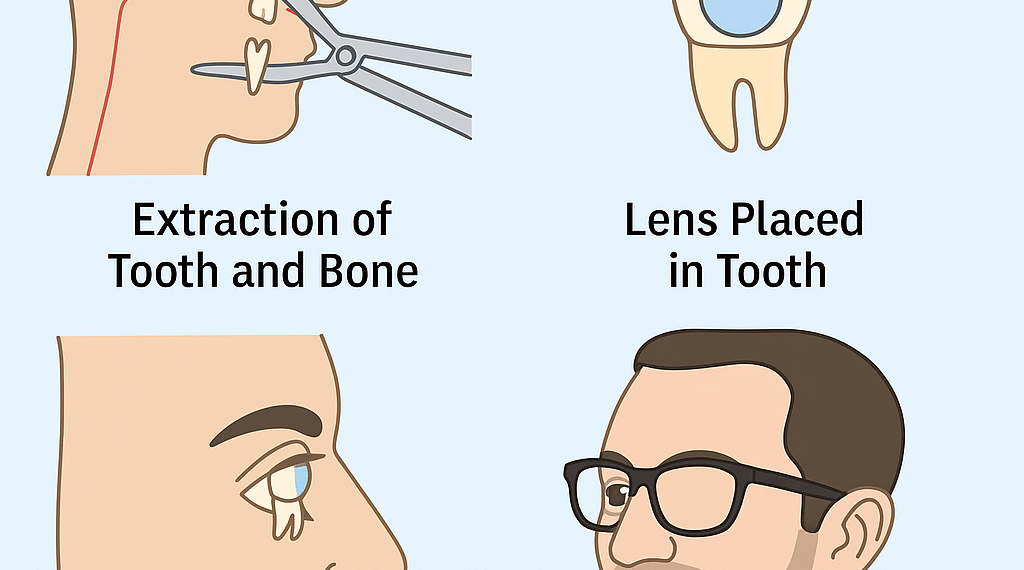Imagine living in complete darkness for two decades, unable to see the world, your family, or even your own reflection. For many blind individuals, this is a heartbreaking reality. But thanks to one of the most unusual and groundbreaking medical procedures ever developed — the Osteo-Odonto Keratoprosthesis (OOKP), also known as the “tooth-in-eye” surgery — sight has been restored to people who thought they would never see again.
What is Tooth-in-Eye Surgery?
The Osteo-Odonto Keratoprosthesis (OOKP) is a rare and highly complex surgery designed for patients who are blind due to severe corneal damage, where traditional corneal transplants cannot help. Unlike conventional eye operations, this method uses something truly surprising: the patient’s own tooth and jawbone.
Step-by-Step Process
- Extraction of Tooth and Bone
A canine tooth and a small piece of jawbone are removed from the patient. This material provides a strong, living structure to hold an optical implant. - Lens Placement in the Tooth
A tiny artificial lens is inserted into the shaped tooth-bone structure. This creates a natural, biocompatible frame for the lens. - Implantation in the Eye
The tooth-lens combination is implanted into the patient’s damaged eye. The eye tissue grows around it, stabilizing the implant. - Restoration of Vision
After healing, light passes through the implanted lens to the retina, allowing the patient to see again.
Why a Tooth?
The idea may sound bizarre, but the tooth is one of the strongest natural materials in the body. Since it comes from the patient’s own body, the risk of rejection is extremely low compared to synthetic implants. The jawbone tissue attached to the tooth helps the lens remain firmly anchored in the eye.
A Journey of Hope and Science
This surgery was first developed in the 1960s in Italy by Professor Benedetto Strampelli. Since then, only a few hundred people worldwide have undergone the operation. But for those patients, the results have been life-changing.
The story that inspired this article is of a man who had been blind for 20 years. After undergoing the OOKP surgery, he opened his eyes to see the world once again — a moment filled with tears, joy, and disbelief.
The Future of Vision Restoration
While still rare and performed only in specialized hospitals, the tooth-in-eye surgery shows how far medical science can go to restore lost hope. Researchers are now exploring even more advanced techniques, including stem cell therapies and artificial corneas, but OOKP remains a shining example of innovation meeting compassion.
Key Takeaways
- Tooth-in-eye surgery (OOKP) is a last-resort procedure for patients with severe corneal blindness.
- It involves using a patient’s own tooth and jawbone to hold an optical lens inside the eye.
- First performed in the 1960s, the surgery has restored sight for hundreds of people worldwide.
- It proves how creative, unconventional medical science can transform lives.
















